
A-37B

The
Cessna A-37 was developed from the T-37C, which was built to meet a
trainer specification that the Air Force issued in April of 1952.
Cessna won the resulting contract to build the trainer and a contract
for three prototypes was issued in April of 1954. The XT-37 made its
first flight in October of 1954. After a thorough flight-testing
program, changes were made and the first production aircraft was
delivered to the Air Force during June of 1956 as the T-37A. The T-37B
was basically the same airframe with higher-powered engines and
improved avionics. During 1961 Cessna began development of an
armed variant to be used for armament training. This included a
strengthened wing with two pylons, one under each wing. Provision was
also made for 65-gallon wingtip tanks. After successful testing with
the armament option, the aircraft was ordered into production as the
T-37C. With the armament option the aircraft became a candidate for
counter insurgency operations (COIN) however it gained firepower at the
expense of performance. As an armed trainer it could carry a wide
variety of armament and provision was made for carrying Sidewinder
air-to-air missiles.
During late 1962 the Special Air Warfare center evaluated two
T-37C’s for possible use in the COIN role. Following the
evaluation the Air Force decided to develop an improved variant of the
T-37C with a greater weapons load, increased range, higher thrust
engines and better short field performance. During 1963 Cessna received
a contract for two prototypes under the designation of YAT-37D. Changes
from the T-37C included two GE J85 engines with more than double the
thrust of the original engines, strengthened wings with six pylons for
under wing stores, self-sealing fuel tanks, cockpit armor, a nose
mounted 7.62mm minigun with 1500 rounds of ammunition, a gun sight, a
gun camera, larger wheels and tires, 95 gallon wingtip tanks and a
special electronics package for communications, navigation and target
acquisition. The first prototype flew in October of 1963.
The Air Force decided the best way to properly evaluate the aircraft
would be under actual conditions and as a result placed an order with
Cessna for a preproduction evaluation batch of thirty-nine aircraft
under the designation of AT-37D. Shortly after this contract was
released the designation was changed to A-37A. To speed up the program
the 39 aircraft were converted from standard T-37B’s. In August
of 1967 twenty-five of the thirty-nine were deployed to Vietnam and
flew more than 5000 sorties. They operated in six basic roles; close
air support, helicopter escort, combat air patrol, armed
reconnaissance, forward air control and night interdiction. Some 3000
sorties were flown without a single loss to enemy fire although
twenty-four aircraft suffered hits from ground fire and two crashed in
landing accidents.
While highly successful the combat evaluation highlighted a number of
problems, most notably lack of range and loiter time. Also there was an
issue with severe control loads when carrying weapons at normal release
speeds and the lack of redundancy in the primary control runs was
another concern. As a result of this the Air Force order the A-37A to
be modified to over come these under the designation A-37B. The initial
production order was for fifty-seven aircraft but this was increased to
127 in a short time. The A-37B’s were intended to replace the A-1
Skyraiders of the South Vietnamese Air Force. Cessna incorporated a
number of structural changes that increased the structural limit from
five to six G’s and added an automatic air inlet de-icing system
and modified the control panel to facilitate flying from either seat. An
automatic engine starting system was also added. The A-37B also had the
provision for in-flight refueling by means of a fixed nose probe. In
addition the fuel tanks were modified with foam filling to prevent an
explosion in case of a hit by enemy fire. The engine power was again
boosted. The high-pressure tires of the A model were replaced by high
flotation tires and the landing gear had new wheels and axles to
accommodate them. Additional orders for fifty aircraft were issued in
September of 1968, followed by additional orders that brought the total
to some 366 by September of 1969.
The A-37B performed well in Vietnam and obtained a high degree of
weapons delivery accuracy in daylight clear weather missions. Of the
577 A-37B’s that were built, 254 were transferred to the VNAF. A
further 110 A-37B’s were produced after the Vietnam War for
export under the Military Assistance Program. These were joined by
aircraft being retired from Air Force service. Following the withdrawal
from Southeast Asia, the A-37B’s were phased out of the Tactical
Air command and passed on to the Air Force Reserve and Air National
Guard units. Between 1980 and 1982 at least 122 A-37B’s were
redesignated as OA-37B’s to reflect their new role as Forward Air
Control aircraft.
The Kit
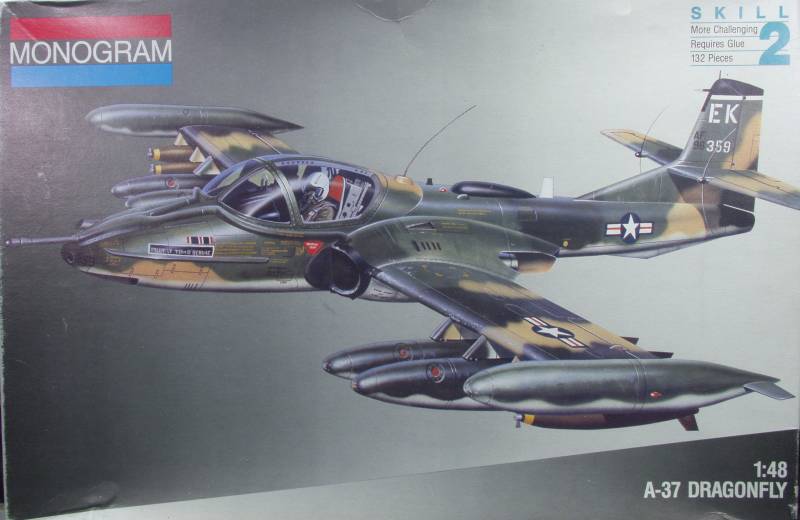
The Monogram kit comes in a two part top open box with a nice painting of the A-37 on the top. Inside the parts are contained in a single bag and consists of four sprues of gray injection molded plastic and one sprue of clear parts. My kit featured a copy write date of 1992 but it may have been around before that time as it features raised panel lines and fastener detail. The only exception is the outlines for the control surfaces which are recessed and quite nicely done. The panel lines and fastener detail are fine and don't look out of place and the only issue will be preserving them during sanding and filling operations. The surface of the airframe parts is smooth and I found no sink marks or other surface blemishes except for the copy write date and name on the bottom of one wing which you will want to sand off. The cockpit is nicely appointed with two ejection seats, sticks, throttle quadrants and pilots if you desire to use them. The control surfaces are all fixed and the wing tip tanks are molded integral with the wings. The speed brake is a separate part and may be posed in the open position. The nose gear bay has molded in detail in the top and additional detail is added with separate side pieces that have the nose gear doors molded to them. The main gear bays also have some molded in detail. The engines are represented by turbine blade fronts and exhaust pipes in the rear. Ejector pin marks are few and far between and only one or two may show when the kit is assembled. The kit comes with a full load of under wing stores including bombs, drop tanks, napalm and minigun pods. For a relatively small aircraft the kit is loaded with detail with sway braces for the under wing loads and a plethora of antennas. The only part that could use some help is the FOD screen for the intakes which would benefit greatly with a replacement PE part. Altogether by my count there are 121 parts in gray, a good number for the size of the aircraft. See below.
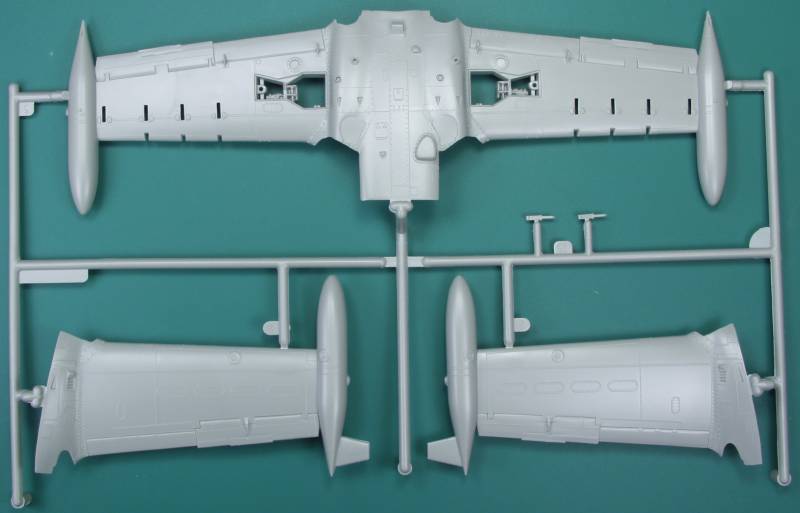
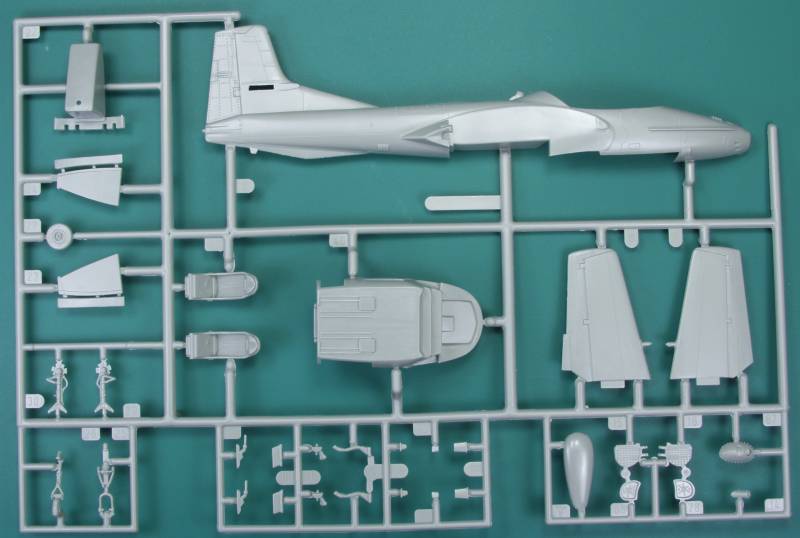
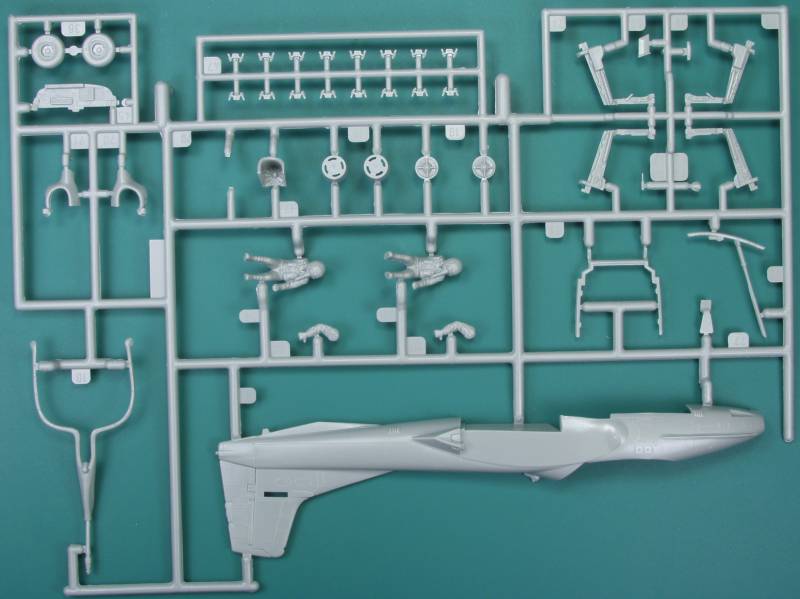
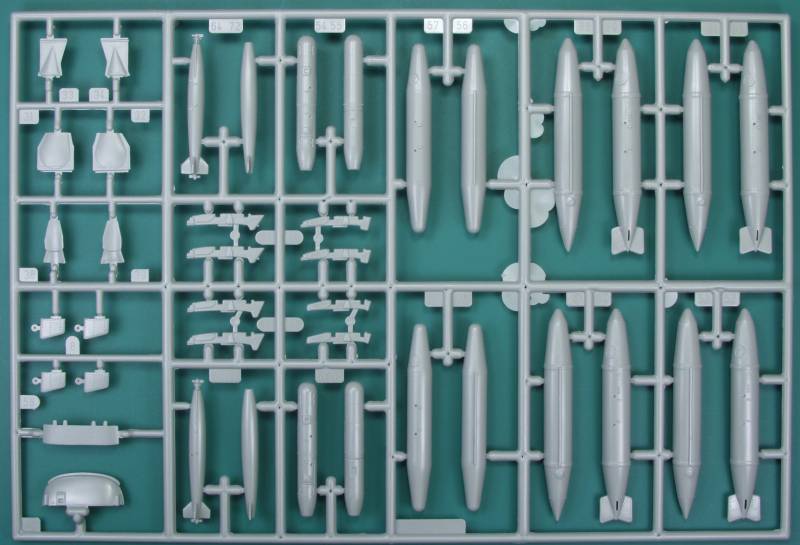
The clear parts are clear and reasonably thin although mine suffered from a few scratches from coexisting with the rest of the parts. Altogether there are 9 clear parts, see below.
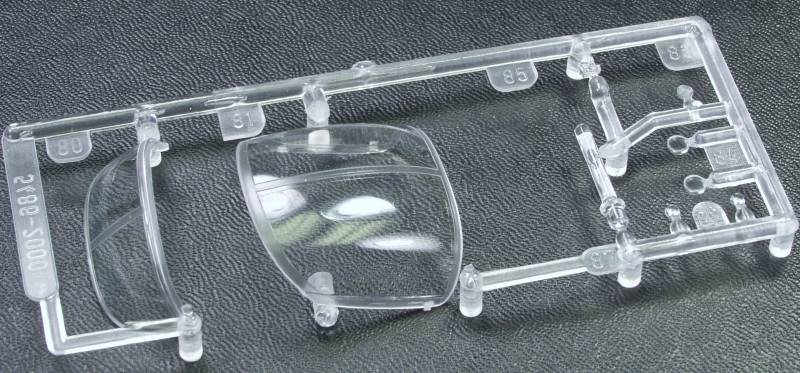
The decals are thin and glossy and well registered and include markings for two aircraft, one each from the U.S. Air Force and the South Vietnamese Air Force. A fair number of stencils are supplied. see below.
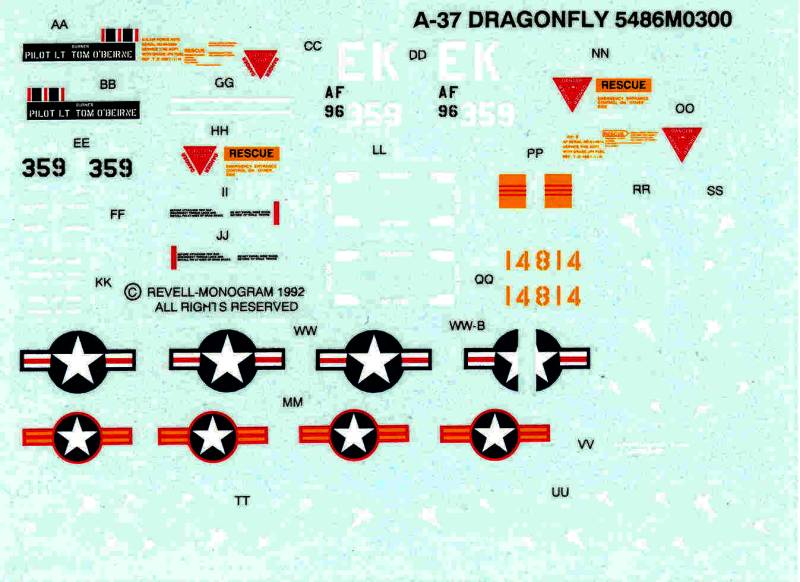
The instructions are in a long landscape format folded into fourths. One panel has a brief description, generic assembly instructions, icon chart and paint colors by name only in seven languages. The balance has the assembly and marking instructions with the assembly steps broken down into 32 steps.
After Market Goodies
Airwaves makes a photoetch set [ACE48046] which is available from Hannants. It includes harnesses and belts, instrument panel detail, rudder pedals, and various and sundry bits and pieces for both the inside and out including FOD screens. See below.
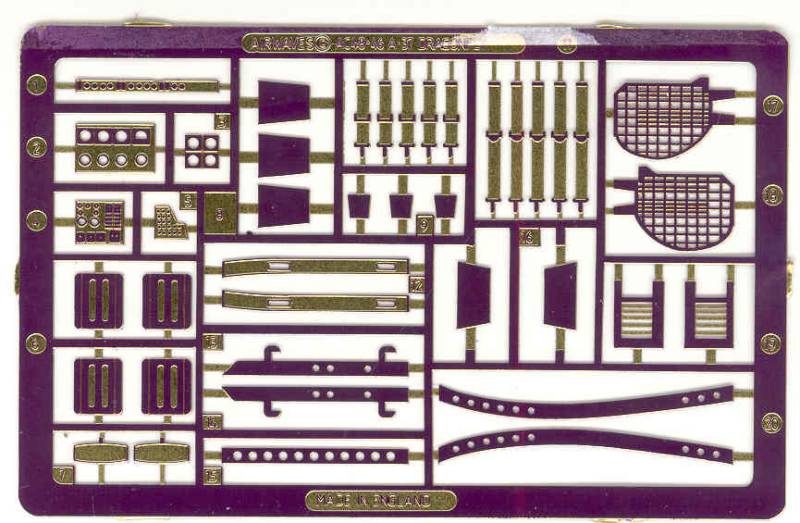
Conclusions
While it has the dreaded raised panel lines and detail which seems to be a deal breaker for a lot of folks, this one is the only game in town in this scale and it really is a nicely detail kit. It gets relatively good reviews for fit and assembly and comes with a nice assortment on under wing stores which some of the more pricey newer kits don't include. Recommended for modelers of most skill levels.
Links to kit build or reviews
A build / review can be found here, here and here.
References
Tweet and the Dragonfly, The story of the Cessna A-37 and T-37 by Kev Darling
A-37 / T-37 in Action by Terry Love